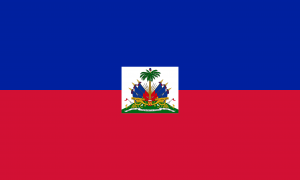Language/Haitian/Grammar/Gender
Hi Haitian learners! 😊
In this lesson, we will explore a fundamental aspect of Haitian language: gender. Understanding gender is essential to learn the language correctly and avoid common mistakes. Moreover, gender is an excellent way to learn about Haitian culture, as many words are gendered based on social norms, professions, and more. Let's dive in!
Gender in Haitian[edit | edit source]
Haitian has two genders: masculine and feminine. Unlike English, Haitian gender is not always related to biological sex; rather, it can be based on context and convention. For instance:
- Masculine is used for masculine nouns, male people, animals, and objects.
- Feminine is used for feminine nouns, female people, animals, and objects.
In practice, it means that you need to learn and memorize the gender of every noun you encounter. However, some patterns can help you guess the gender in some cases.
Guessing Noun Gender[edit | edit source]
Some patterns can help you guess the gender of nouns better:
- Many nouns ending in "-w" or "-n" are masculine. For instance, "machin" (car), "sosiyete" (society), "pompiye" (pumpkin) are masculine.
- Many nouns that end in "-i" or "-aye" are feminine. For example, "fanm" (woman), "kredi" (credit), "kouray" (quilt) are feminine.
- Many professions that end with "-è" are feminine, such as "manmè" (mother), "jijè" (aunt), "penpan" (housekeeper).
- Many professions that end with "-è" are masculine, like "machinist" (mechanic), "plombiye" (plumber), "kèkè" (cook).
However, these patterns are not fixed rules, and there are exceptions. To master genders, it is best to learn them on a case-by-case basis.
Gender Agreement[edit | edit source]
Haitian grammar requires that adjectives, articles, and possessive pronouns agree with the gender of the noun they modify. In other words, if the noun is masculine, the article, adjective or pronoun used to describe it must match in gender. The same is true for feminine nouns; any modifier must be in agreement with it.
For example, if you want to say "the big car," you would say "machin gran" for a masculine noun, and "machin granmoun" for a feminine noun. Notice how the word "gran" agrees with the gender of the noun.
Let's see another example:
- Un bel ayisyen. (A handsome Haitian man.)
- Yon bèl ayisyèn. (A beautiful Haitian woman.)
In the examples given above, "bel" in the first instance is masculine because it describes "ayisyen," a masculine noun. In the second example, "bèl" is feminine because it describes "ayisyèn," a feminine noun.
Plurals and Gender[edit | edit source]
When a noun is plural, its gender is determined by the gender of its constituents. If the constituents are all masculine, the noun is masculine. If the constituents are all feminine, the noun is feminine. If the constituents are mixed, the noun will use the masculine gender (for instance, if there are ten women and one man in a group, the group will be referred to using a masculine noun).
Let's see an example:
| Haitian | Pronunciation | English |
|---|---|---|
| zanmi | zanmi | friend |
| zanmi mwen | zanmi mwen | my friend |
| zanmi mwen yo | zanmi mwen yo | my friends |
| zanmi yo | zanmi yo | their friends |
In the example above, "zanmi" is masculine, even if every friend is female. However, if there were ten female friends and one male friend, the noun would still be masculine due to the presence of the male friend.
Dialogue[edit | edit source]
To practice the concepts we have discussed in this lesson, let's have a dialogue between two friends:
- Mwen pale avèk Janmari.
- Ki jan ou ye, Janmari?
- Mwen byen, mèsi.
- Kijan fanmi'w ye?
- Elemanm sa a byen, mèsi.
- Koman nouvo kay la?
- Li byen. Li gen yon bel katye.
- Gen anpil fanm nan katye sa a.
- Wi, se yon katye ki pi feminen avèk muit pase gason.
Translation:
- I spoke with Janmari.
- How are you doing, Janmari?
- I'm fine, thank you.
- How's your family doing?
- They're doing well, thanks.
- How about the new house?
- It's good. It's in a nice neighborhood.
- There are many women in that neighborhood.
- Yes, it's a neighborhood that's more feminine than masculine.
Summary[edit | edit source]
In Haitian, gender is an essential aspect of the language. Learning noun genders can be a challenge but provides valuable insight into Haitian culture. Gender agreement is another essential element to learn to speak the language properly. Moreover, understanding plurals and gender requires a solid understanding of grammatical gender. If you feel like you need more practice or want to improve your Haitian Grammar, consider using the Polyglot Club website. Find native speakers and ask them any questions!
➡ If you have any questions, please ask them in the comments section below.
➡ Feel free to edit this wiki page if you think it can be improved. 😎
Sources[edit | edit source]
Other Lessons[edit | edit source]
- Nouns
- Give your Opinion
- Adjectives
- Questions
- Negation
- How to Use Be
- Pronouns
- Conditional Mood
- Future Tense

